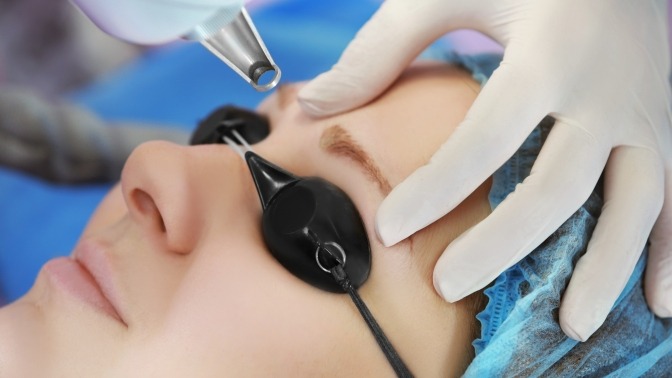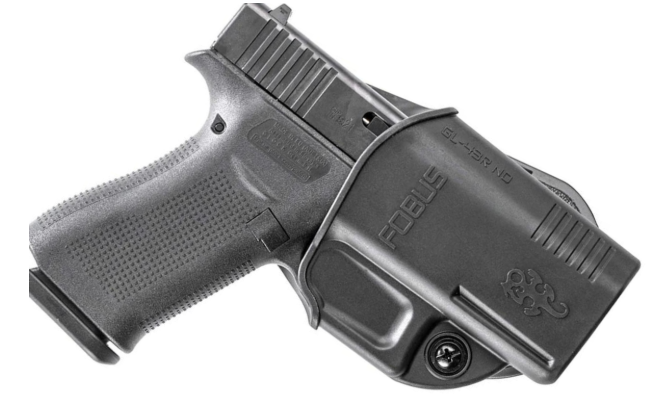The Best Methods for Removing Permanent Makeup Tattoo
Laser removal, saline removal, and glycolic acid treatments are the most effective methods for removing permanent makeup tattoos, with each offering different benefits based on pigment color, skin type, and tattoo age. Laser treatments work best for darker pigments by breaking them into smaller particles for the body to eliminate, while saline removal draws pigment out through osmosis using a salt solution. Glycolic acid treatments gradually lift pigment through controlled exfoliation, offering a gentler approach for sensitive areas like eyebrows and lips.
Complete removal of permanent makeup tattoo typically requires multiple sessions spaced 6-8 weeks apart regardless of the chosen method. The best technique depends on your specific circumstances—including pigment color, skin sensitivity, budget constraints, and desired timeframe—making a professional consultation essential before proceeding with any treatment plan.
How Each Removal Method Works on Permanent Makeup
The removal of cosmetic tattoos differs significantly from body tattoo removal due to the location, pigment types, and skin sensitivity of facial areas.
| Removal Method | How It Works | Best For | Average Sessions Needed | Recovery Time |
|---|---|---|---|---|
| Laser Treatment | Uses pulsed light to break pigment into smaller particles | Dark colors (black, brown, blue) | 3-10 | 5-10 days |
| Saline Removal | Osmosis draws pigment out using a salt solution | All pigment colors, including stubborn reds | 3-5 | 7-14 days |
| Glycolic Acid | Controlled exfoliation lifts pigment gradually | Sensitive areas, superficial pigment | 4-8 | 3-7 days |
| Retinol/Chemical Peel | Accelerates cell turnover to fade pigment | Minor fading only, not complete removal | 6-12 | 5-12 days |
| Microdermabrasion | Physical exfoliation to lift superficial pigment | Very light, surface-level pigment | 6-12 | 1-3 days |
Bonus Tip: When considering removal of eyeliner tattoos specifically, research practitioners who specialize in this delicate area. Eyeliner removal requires additional safety precautions and specialized techniques to protect the eyes during treatment.
Laser Technology for Permanent Makeup Removal
Laser treatments use specific wavelengths targeted to different pigment colors:
| Laser Type | Wavelength | Best For Removing | Limitations | Skin Types Suitable |
|---|---|---|---|---|
| Q-switched Nd:YAG | 1064nm | Black, dark blue, dark brown | Less effective on reds/oranges | All skin types, including darker tones |
| Ruby | 694nm | Blue, black, green | Can cause hypopigmentation | Light skin tones only |
| Alexandrite | 755nm | Green, blue, black | Less effective on reds | Light to medium skin tones |
| Picosecond | Various | Multiple color range | Higher cost | All skin types |
| Erbium YAG | 2940nm | Superficial pigments | Limited depth penetration | All skin types |
Industry data indicates that laser removal accounts for approximately 65% of all permanent makeup removal procedures, with its effectiveness particularly high for eyebrow tattoos containing carbon-based black pigments.
Saline and Chemical Removal Techniques
Non-laser approaches offer alternatives for those with contraindications to laser treatment:
| Technique | Solution Composition | Application Method | Advantages | Disadvantages |
|---|---|---|---|---|
| Traditional Saline | Salt, purified water, sometimes glycerin | Micro-needling device | Works on all pigment colors | More intense scabbing |
| Li-FT Method | Proprietary saline solution with lifting agents | Manual tool or machine | Less skin trauma | Limited availability |
| Glycolic Acid | 30-70% glycolic acid solution | Targeted application | Gentler on sensitive skin | More sessions required |
| Lactic Acid | Lactic acid compound | Surface application | Very gentle approach | Slowest results |
| Enzymatic Products | Specialized enzymes that target pigment | Direct application | Minimal downtime | Limited effectiveness |
Comparing Removal Options by Permanent Makeup Type
Different permanent makeup applications respond better to specific removal methods:
| Tattoo Location | Best Removal Method | Challenges | Special Considerations | Expected Results |
|---|---|---|---|---|
| Eyebrows | Saline or Laser | Proximity to eyes, brow hair | Hair preservation important | 80-95% removal possible |
| Eyeliner | Specialized Laser or Glycolic Acid | Extremely sensitive area | Eye protection crucial | 70-90% removal possible |
| Lip Color | Saline or Combination Approach | Mucous membranes, sensitivity | High blood supply causes faster fading | 75-90% removal possible |
| Microblading | Saline or Laser | Superficial but precise strokes | Often easier to remove than traditional | 85-95% removal possible |
| Areola/Nipple | Gentle Laser or Glycolic Acid | Highly sensitive tissue | Requires specialized certification | 70-85% removal possible |
Market research shows that eyebrow tattoo removal represents approximately 68% of all permanent makeup removal requests, followed by lip color (18%) and eyeliner (14%).

Why Results Vary Between Individuals
Several factors impact the success and speed of permanent makeup removal:
| Factor | Impact on Removal | How It Affects Treatment Plan |
|---|---|---|
| Pigment Color | Certain colors resist specific methods | May require combination approach |
| Pigment Depth | Deeper placement requires more sessions | Longer treatment timeline |
| Tattoo Age | Older tattoos often easier to remove | Fewer sessions may be needed |
| Skin Type | Darker skin requires gentler approach | May limit laser options |
| Prior Touchups | Multiple layers complicate removal | Extended timeline necessary |
| Aftercare Compliance | Affects healing between sessions | Can speed up or slow down process |
| Immune System | Determines how quickly body eliminates pigment | Varies by individual |
Things to Consider Before Making a Decision
Practitioner Qualifications and Specialization
The success of permanent makeup removal heavily depends on the provider’s expertise:
| Credential/Experience | What to Look For | Why It Matters |
|---|---|---|
| Training certification | Specific training in PMU removal | Techniques differ from body tattoo removal |
| Portfolio | Before/after photos of similar cases | Demonstrates actual results, not just promises |
| Medical supervision | Physician oversight for certain methods | Adds safety layer for complications |
| Experience with your skin type | Ask about similar clients | Reduces risk of pigmentation issues |
| Reviews specific to removal | Not just general practice reviews | Confirms specialization in removal |
Expected Timeline and Multiple Sessions
Permanent makeup removal requires patience and realistic expectations:
- Complete removal typically takes 3-12 months depending on method
- Sessions must be spaced 6-8 weeks apart to allow healing
- Immediate results are not possible with any method
- Gradual fading occurs between sessions
- Some pigment ghosting may remain in certain cases
Bonus Tip: Document your removal journey with consistent photos taken in the same lighting conditions before each session. This helps you objectively track progress that might be difficult to notice day-to-day and provides valuable information for your technician to adjust treatment as needed.
Potential Side Effects and Management
Understanding possible complications helps in making an informed decision:
| Side Effect | Prevalence | Prevention/Management | Duration |
|---|---|---|---|
| Hyperpigmentation | Common, especially in darker skin | Sun protection, proper aftercare | 3-6 months, sometimes permanent |
| Hypopigmentation | Possible with laser treatment | Proper laser selection, test patches | 3-12 months, sometimes permanent |
| Scarring | Uncommon with proper technique | Gentle methods, appropriate spacing | Potentially permanent |
| Texture changes | Temporary in most cases | Moisturizing, gentle skin care | 1-6 months |
| Color shift | Common during process | Expected part of breakdown process | Throughout removal process |
Cost Comparison of Removal Methods
Financial investment varies significantly between methods:
| Method | Cost Per Session | Average Total Investment | Additional Costs |
|---|---|---|---|
| Q-switched Laser | $200-$500 | $800-$3,500 | Numbing cream, aftercare products |
| Picosecond Laser | $300-$600 | $1,200-$4,500 | Numbing cream, aftercare products |
| Saline Removal | $150-$400 | $600-$2,000 | Aftercare products |
| Glycolic Acid | $100-$300 | $600-$2,400 | More frequent sessions |
| Combination Methods | $250-$550 | $1,000-$4,000 | Method-specific aftercare |
According to industry statistics, the average client spends approximately $1,800 on permanent makeup removal treatments before achieving their desired results, with costs varying significantly by geographic location and practitioner expertise.
Permanent Makeup Removal FAQ
How painful is permanent makeup removal?
Pain levels vary by method and individual pain tolerance. Laser treatments feel like sharp rubber band snaps and typically take only minutes. Saline and acid methods involve longer appointments (30-60 minutes) with steady discomfort. Most practitioners offer topical numbing creams to reduce discomfort. Eyeliner removal tends to be most uncomfortable regardless of method due to the sensitive location.
Can all permanent makeup be completely removed?
Complete 100% removal is not guaranteed with any method. Most clients can expect 80-95% pigment reduction with a full treatment series. Factors affecting complete removal include pigment type (some colors are more stubborn), how deep the pigment was implanted, and whether the tattoo contains titanium dioxide (common in many permanent makeup pigments), which can oxidize during laser treatment.
What should I expect during recovery after a removal session?
Recovery varies by method. Laser treatments typically cause immediate whitening followed by redness lasting 2-3 days. Saline and acid methods produce controlled scabbing that forms within 24 hours and should fall off naturally within 5-10 days. All methods require keeping the area clean, avoiding makeup on treated areas during healing, applying prescribed aftercare, and strict sun protection to prevent pigmentation issues.
Can I just cover up my permanent makeup with another tattoo?
Color correction or camouflage is sometimes an option but depends on the original pigment color, depth, and your desired outcome. For some, a color correction to a more desirable shade may be preferable to complete removal. However, adding more pigment makes future removal more difficult if desired later. Consult with an experienced permanent makeup artist who specializes in correction work to evaluate this option.
How soon after removal can I get new permanent makeup?
Wait a minimum of 3 months after your final removal session before considering new permanent makeup application. This allows the skin to fully heal and any potential pigment ghosting to stabilize. For sensitive areas like eyeliner, waiting 6 months is recommended. The treated skin texture and condition must return to normal before undergoing another tattooing procedure to ensure optimal results.
Make the Right Decision
Removing permanent makeup requires careful consideration of the tattoo characteristics, your skin type, budget, and timeline expectations. Laser treatments offer fastest results for darker pigments, while saline removal excels with colorful or sensitive-area tattoos. For subtle results with minimal downtime, glycolic acid treatments provide a gentler alternative.
Begin with a consultation from a specialist in permanent makeup removal rather than general tattoo removal. The facial skin’s unique properties and the cosmetic nature of permanent makeup demand specialized knowledge for optimal results. Request before-and-after photos of similar cases, create a realistic timeline, and prepare for multiple sessions regardless of the method selected. By approaching removal with patience and proper provider selection, you can successfully transition away from unwanted permanent makeup with minimal complications.










